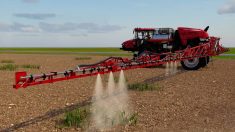“The data from the last 30 years suggests that while we need to continue to increase agricultural productivity, we have been producing enough calories to meet the needs of the world.”
At the time of the World Food Conference in 1974, over 800 million people out of a world population of 4.2 billion people were classified as chronically hungry.
The participants of the World Food Conference pledged to eradicate hunger within a decade.
Over 20 years later, the 1996 World Food Summit pledged to reduce the number of hungry by half by 2015. At the time the number of hungry still exceeded 800 million out of a world population of 5.8 billion people.
Read Also

Guarding against misinformation: Do you believe in house hippos?
Misinformation and disinformation run rampant in today’s digital age. Farmers must be wary of the digital dangers and know how to keep themselves safe.
Today the world population is 6.8 billion people and the number classified as chronically hungry has risen to over 1.1 billion and 2015 is just five years away.
The effort to reduce the number of hungry has gone backwards. Once again, there are efforts to significantly reduce this number.
To help us understand what is going on, we took some time to look at changes in both world population and the world production of major grains and oilseeds. Over the last 30 years (1980-2009), the world population has increased by 51.7 per cent from 4.45 billion in 1980 to 6.76 billion in 2009.
During this time period the production of eight major grains (barley, corn, millet, oats, rice, rye, sorghum, and wheat) has increased by 54.6 per cent, just slightly more than the population increase.
The production of seven oilseeds, on the other hand, has increased by 188.7 per cent over this period. Together the 15 crops have increased by 67.4 per cent over the 1980-2009 period.
Production and price
During this period we have seen extended times when the price of these 15 crops was well below the cost of production for U.S. farmers and many other farmers around the world. Despite the low prices, the level of hunger did not decrease because even with a low price 800 million people lacked the ability to buy the low-priced grain in adequate quantities to reduce chronic hunger.
In looking at hunger, we face two interlinking issues. The first is the adequacy of production. Do we produce enough of the basic grains and oilseeds to provide an adequate diet that also included fruits, vegetables, and animal products?
The data from the last 30 years suggests that while we need to continue to increase agricultural productivity, we have been producing enough calories to meet the needs of the world, albeit there may be a need to adjust the production mix.
The second issue involves the ability of people to afford to buy food that has been produced by others or the ability and wherewithal to produce it themselves. The answer to this issue is much more problematic as evidenced by the constant presence of 800 million to 1.1 billion chronically hungry people in the world.
Concerns
In looking at some of the activity that surrounds the cause of “feeding the world’s 9.2 billion to 9.5 billion people in 2050,” we have some concerns because the activity only focuses on the first problem.
We have no doubt that the world’s farmers will be able to increase the 15 crop production at a rate faster than the increase in population over the next 40 years. The question is, will those who need the food be able to afford to purchase it or will some of it have to be diverted to other uses to cover the cost of production?
Looking at a number of historical and contemporary models, we have come to believe that a significant part of reducing hunger in the world depends upon taking smallholder agriculture seriously, providing small producers with the level of public research and extension that will enable them to feed themselves and their family.
The exporting of crops will always have its place in balancing out the variability of local production, but exports alone have not brought prosperity to farmers in the developed world or freedom from hunger among the world’s poor.
Daryll E. Ray holds the Blasingame Chair of Excellence in Agricultural Policy, Institute of Agriculture, University of Tennessee, and is the director of UT’s Agricultural Policy Analysis Centerwww.agpolicy.org.His column is written with the research and assistance of research associate Harwood D. Schaffer.














